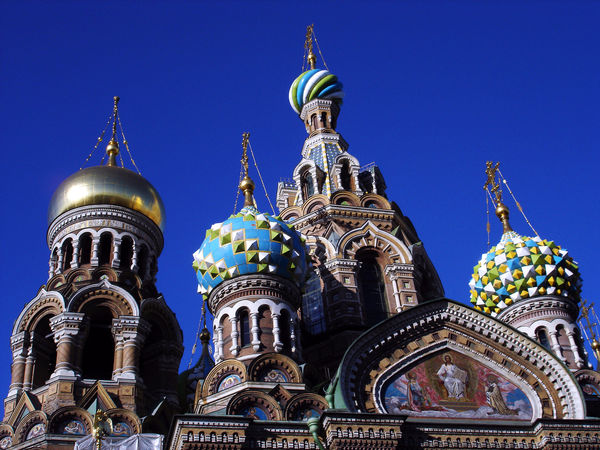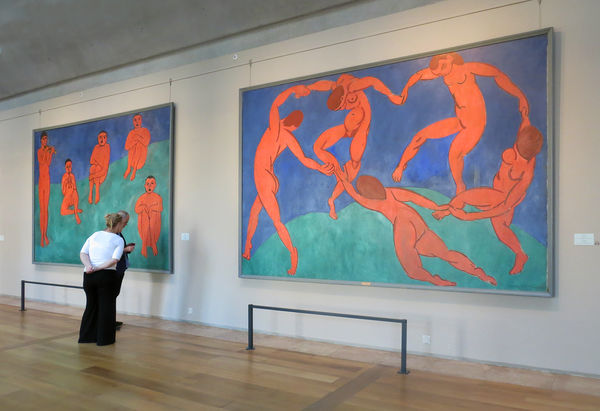Stories of Revolution in Russia’s St. Petersburg
By Rick Steves

A former imperial capital and the home of the czars, St. Petersburg is Russia's most tourist-worthy city. Pastel palaces, bucolic gardens, commanding statues, and graceful waterways evoke romantic images of Peter the Great and the Romanov dynasty.
But travelers can also find memories of St. Petersburg's darker history: In 1917, the Russian Revolution started in the streets, ultimately doing away with the czars and ushering in the Soviet era.
In February of that year, Czar Nicholas II was ousted and a provisional government took over. Just months later, in what's now called the "October Revolution," Vladimir Lenin and the Bolsheviks grabbed power. Not long after, the Bolsheviks executed Nicholas and his family.
In today's Russia, there's little official recognition of the centenary of these turbulent events. Still, St. Petersburg's Museum of Russian Political History tells the story in detail, and as do several other revolutionary sights scattered across the city.
Start with the battleship Aurora, docked on the Neva River (and now a museum). According to popular history, this ship had a key role in the revolution: It was a shot fired from the Aurora that signaled the start of the October uprising.
On that fateful day, the anarchists' first move was to storm the czars' Winter Palace (now the Hermitage Museum), where members of the provisional government had holed up. Imagine them worriedly looking out over the huge Palace Square as it filled with masses of angry workers, inspired to action by the promise of a better life under Bolshevism.
The seeds of this discontent had been planted a half-century earlier, in 1861. Nicholas' grandfather, Alexander II, freed Russia's serfs. Suddenly free but with no land and no livelihood, the dumbfounded peasants rioted. Meanwhile, extremists, dissatisfied with the pace of reform, began plotting. In the end, an assassin tossed a bomb at Alexander, killing him on a St. Petersburg street in 1881.
The Romanovs built the onion-domed Church on Spilled Blood to commemorate the very spot where the czar fell (even preserving the bloodied cobbles). With its gilded domes and dazzling mosaics, it's a fairy-tale image of Russian tradition and history, and one of the city's most popular sights.
But the very theme of the church — honoring an assassinated czar — was an insult to the Bolsheviks. They looted it with gusto during the 1917 revolution. In the communist era, the church was used for storing potatoes, and the streets around it were named for Alexander's assassins.
Other churches suffered similar degradations. Mobs overran the Peter and Paul Fortress, ransacked its cathedral of Sts. Peter and Paul, and desecrated the Romanov tombs there. Some churches were made into ice-hockey rinks, swimming pools, and so on. The Kazan Cathedral, repository of the treasured icon of Our Lady of Kazan, for years functioned as a Museum of Atheism.
Today, the churches and Orthodox religious practices have made a comeback. It's particularly meaningful to see the beautifully renovated cathedral of Sts. Peter and Paul. Glittering with Orthodox imagery, it's filled to the brim with dead czars and czarinas, including the last Romanovs: Nicholas II and his wife and children. Things have changed so much that they're now considered martyrs, and were canonized by the Russian Orthodox Church.
Ironically, St. Petersburg's museums owe some of their wealth of western European art to the revolution. The urbane aristocrats of turn-of-the-century Russia patronized French Impressionist and Post-Impressionist artists, buying paintings in Paris (especially from newcomers like Henri Matisse and Pablo Picasso) and sending them home to St. Petersburg.
After the October Revolution, the state confiscated those private collections and designated them to state museums. The owners, meanwhile, fled abroad. Today the very paintings that once hung in St. Petersburg's palatial townhouses are viewable in the galleries of the Hermitage and the Russian Museum.
Perhaps the most storied "reclaimed" artworks in St. Petersburg are the Easter eggs crafted by the illustrious House of Fabergé, made on commission for czars Alexander III and Nicholas II. Fourteen Easter eggs — nine of them imperial — are on view in the Fabergé Museum, itself housed in the beautifully restored Shuvalov Palace.
The final imperial egg (on view in the museum) was given by Nicholas to his mother in 1916. When she fled Russia three years later, it was this egg — with miniature portraits of her murdered son and grandson — that the dowager empress carried out. The Bolsheviks kept the rest, and over time, the Soviets sold the eggs to fund their government. The Fabergé Museum (with the help of a deep-pocketed oligarch) had to buy the eggs back on the open market.
A century after the revolution, most tourists come to St. Petersburg for its resurrected aristocratic opulence. But its 20th-century upheavals were every bit as transformative as the age of the Romanovs — and are just as enmeshed in the city's cultural fabric.

